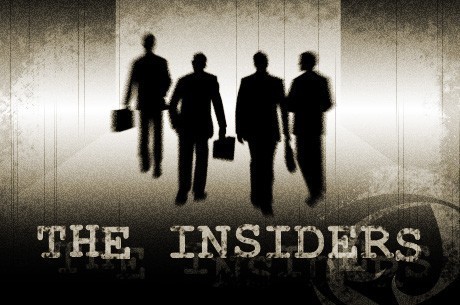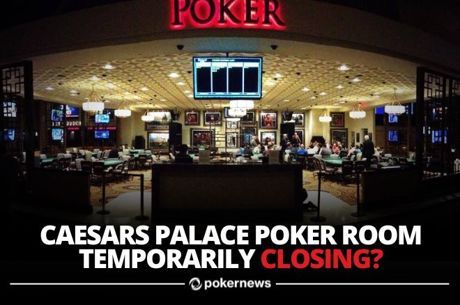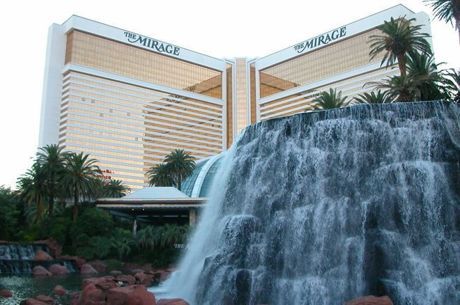Is Poker Good for a Casino?
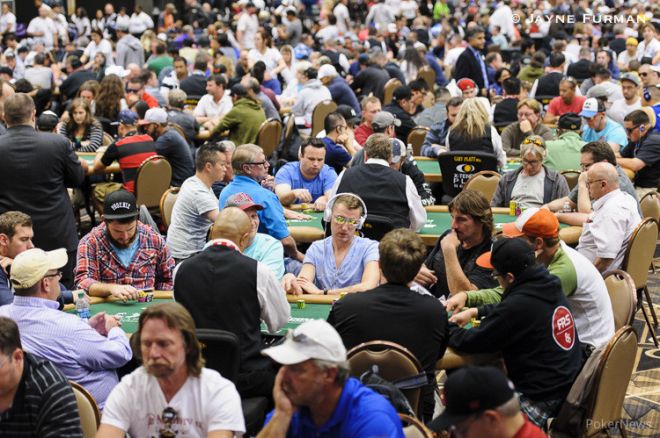
Peter Chi is an Assistant Professor of Statistics at California Polytechnic State University (Cal Poly) in San Luis Obispo, CA. While his professional interests lie mainly in biomedical research and genetics, he is an avid poker player and enjoys looking at applications of statistics to poker and gambling in general. He also enjoys teaching Probability Theory at Cal Poly by using numerous examples from poker and other games of chance.
As the 2014 World Series of Poker winds down with the Main Event right around the corner, it is hard to imagine that the game of poker might not be very profitable to a casino. Players have come from over 70 countries from across the world, to fill the Rio All-Suite Hotel and Casino for more than a month. Surrounding poker rooms have also benefitted from the additional traffic due to the sheer number of poker players currently in Las Vegas.
However, this is not the norm for the entire year. At many Las Vegas casinos, their poker room may not actually be profitable in and of itself, even with the uptick during the WSOP months. Indeed, the fact is that casinos, in Las Vegas or otherwise, tend to make the vast majority of their revenue through their slot machines and table games. These two types of games generally make more money for the casino than everything else combined.
So, if poker is unprofitable or not as profitable to a casino as its other games, then this leads us to the following question: does poker drive business to the real money slot machines and table games? This question actually has many possible facets to it, including the effect of the existence of poker in general, online poker in particular, and most specifically, the poker room at an individual casino and how its presence may or may not draw slot machine and table game traffic there. From a business standpoint, casinos certainly may be interested in this question, as the answer can help them decide whether to support online poker legislation, and/or whether to have a poker room in their property.
Anecdotally, many poker players would say that poker definitely does drive traffic to other games: a quick perusal of the online poker forums would reveal a number of posts from poker players stating that they never would have placed a bet on one of these house games if it were not for the fact that they played poker first, or that when they go to a casino primarily to play poker, they might also play some of the other games as well. Speaking for myself, I can say that I certainly have spent way more time at the blackjack and craps tables than I would if I had not first built a gambling bankroll through poker.
But, how about some actual data? Many casinos likely have done at least some sort of analysis on this question internally; however, for the sake of unbiased, scientifically rigorous answers, it would be preferable to turn to peer-reviewed research published in academic journals. A recent study published in the UNLV Gaming Research and Review Journal is actually the first instance of exactly that.
This study specifically examined the question of whether there is an association between an individual casino��s poker room traffic and its slot machine and table game revenue. Currently, a common assumption is that even if a poker room is not very profitable in and of itself, it still may be useful to have as it would in fact attract people to their property, and specifically to their slot machines and table games. However, the conclusions from this study were that there is actually no evidence that such a relationship exists.
Performed by Dr. Anthony Lucas, Professor of Hotel Administration at UNLV, this study examined data obtained from three Las Vegas resorts, which contained daily revenue statistics over the course of almost a year. On these data, Dr. Lucas executed six statistical tests: for each of the three properties, he tested whether its poker room rake was associated with its slot machine revenue, and also with its table game revenue. In only one of these six tests, he found statistically significant evidence in favor of an association. Thus, his overall conclusion was that five out of his six results question the notion that poker rooms drive business to the slot and table games, and that casinos might want to reconsider having a poker room if it is not profitable on its own. For those of us who like to play poker in a casino, this may come as dismal news. However, I would like to offer a different interpretation of these results.
The first reason for this is because of the distinction between statistical significance and meaningful effect sizes. To illustrate this, consider a poker player whose ability we would like to evaluate �� perhaps if we are interested in staking him. So, to answer this question, it would be good to collect some data to see if he is truly a winning player in the long run.
To this end, imagine that we follow him for a few sessions, in which he plays for 30 hours and comes back with $3,000 in profit. Thus, with these data, we would have observed some evidence that he is a winning player. But, how strong is it? Those of us who have examined our own win rates rigorously will know that this is not very strong evidence, because of the enormous variance in poker. Indeed, if we were to do a formal statistical test, we would inevitably conclude from these data that we did not have statistically significant evidence in support of the notion that he is a winning player (to have ��statistically significant evidence�� that he is a winning player essentially means that the result we observed is sufficiently unlikely to have happened if the truth is that he is not a winning player). With only 30 hours of play in our records, it is not too unlikely that he simply went on a small heater to win $3,000 in that time, even if he is actually a losing or breakeven player in reality.
On the other hand, what if you were forced to ��guess�� his true win rate? You might object and say that we simply do not have enough data to do this, but suppose, hypothetically, that I give you no choice. What would your guess be? Well, a reasonable guess would just be straight from the data that we do have, or $100/hour. Of course, due to the high level of variability, it is more likely that this estimate is wrong than right, or even close. However, if these are the only data that we have, then this is the best that we can do.
Thus, in this example, our estimate of $100/hour is our ��effect size,�� or how much we would guess that this player wins per hour on average based on the data. Although we would not find statistically significant evidence to suggest that he is a winning player from a formal statistical test, this estimate of $100/hour would still be our best guess at his true win rate given the data that we have.
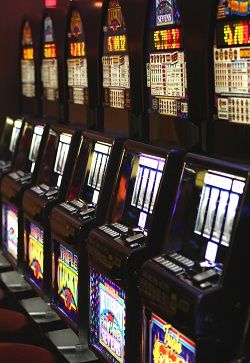
Now, let us look at the results from Dr. Lucas�� study. Recall that he did not find a statistically significant result in five out of six tests that he performed. However, what were the effect sizes? From his analysis, his model e.g. for Resort 1 shows that a 10 percent increase in poker room traffic is associated with an expected increase in profits from slot machines by approximately $965 in any given day (see addendum for details). While this result was not statistically significant, it seems to be a substantial amount of real dollars. If you are thinking that $965 does not sound like very much money for a casino, notice that this is $965 per day, and resulting from merely a 10 percent increase in poker room traffic.
Also, this figure of $965 accounts for the fact that a casino can only expect to keep approximately 7.5 percent of the money that goes into a slot machine (or ��coin-in��), since players sometimes win; the associated increase in the raw coin-in from a 10 percent increase in poker room traffic is thus much greater, at just over $12,800 (or $965 divided by 0.075). Additionally, this particular poker room in Resort 1 only has eight tables, as stated in the original study. Thus, it is clear that a 10 percent increase can actually be no more than eight added people, on average over the course of a day. Considering this, I would say that a $965 increase in slot machine profits resulting from this is rather remarkable (although as a brief aside, this figure does not account for any possible operating expenses associated with running a slot machine).
Just like with our poker player, we may not have obtained a statistically significant result, but I would suggest that we do not ignore the real dollars that have been gained. In other words, if $100/hour is an amount that our poker player considers to be worth playing for, it would make little sense to conclude that he should not be playing, from the data that we have. Clearly, we just need to observe this player for longer, to obtain more data. Likewise, from Resort 1, the important question is this: does the casino consider $965 per day from a 10 percent increase in poker room traffic to be an effect size that would be worth caring about? If so, then we would not want to conclude that our evidence questions whether the casino should have a poker room; we would instead want to collect more data to see if this initial estimate stands or not.
In the addendum, I also examine each of the other five results. In each case, we have varying levels of associations in terms of real dollars, with some being greater than others. However, this leads me to my second reason for interpreting these results much less negatively than the original study does: for every single one of the six statistical tests, the estimated association between poker room rake and the outcome variable (either slot machine or table game revenue) is positive. That is, albeit being statistically significant in only one of the six tests, Dr. Lucas estimates from the data that an increase in poker room rake is associated with an increase in the outcome variable, in all six cases.
This observation is one that should not be ignored. The reason is simple: if there truly is no association between poker room traffic and each outcome variable, then it is equally likely that we should observe a negative association as it is that we should observe a positive association, due to chance and variability in the process. Thus, the chance that we would observe positive associations in all six tests, if the truth is that there really is no association, would be the same as flipping a coin six times and having it land on heads each time. Since this is fairly unlikely, then this provides some evidence that there actually is an association between poker room traffic and revenue from the other games (in statistics, this procedure is known as the ��sign test��).
I want to point out that there were, however, many positive aspects to the study. It is an important question to examine through a rigorous, unbiased study that could be published in a peer-reviewed journal, so I was very pleased to see that one had been done. I feel that it was well performed overall, and in particular, the author is careful to note that his findings should not be extrapolated beyond the three resorts that he specifically studied. I also do not mean to suggest that his negative conclusions were necessarily ��wrong.�� The statistical methodology that he performed was largely correct, and he used standard acceptable criteria to assess statistical significance from his models. I am simply offering a different interpretation of the results obtained in this study. However, I believe that the points I have raised here are important to consider before any managerial decisions would be made by a casino, based on this study or any other like it.
Get all the latest PokerNews updates on your social media outlets. Follow us on Twitter and find us on both Facebook and Google+!


